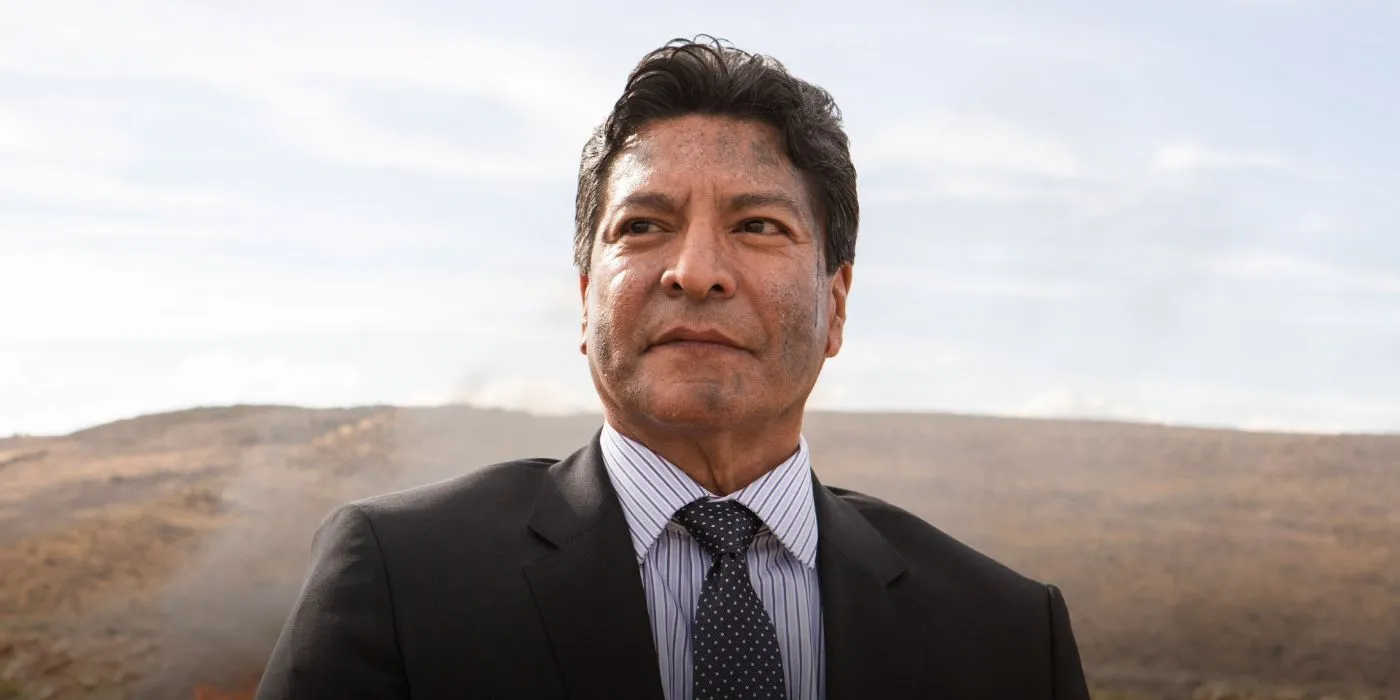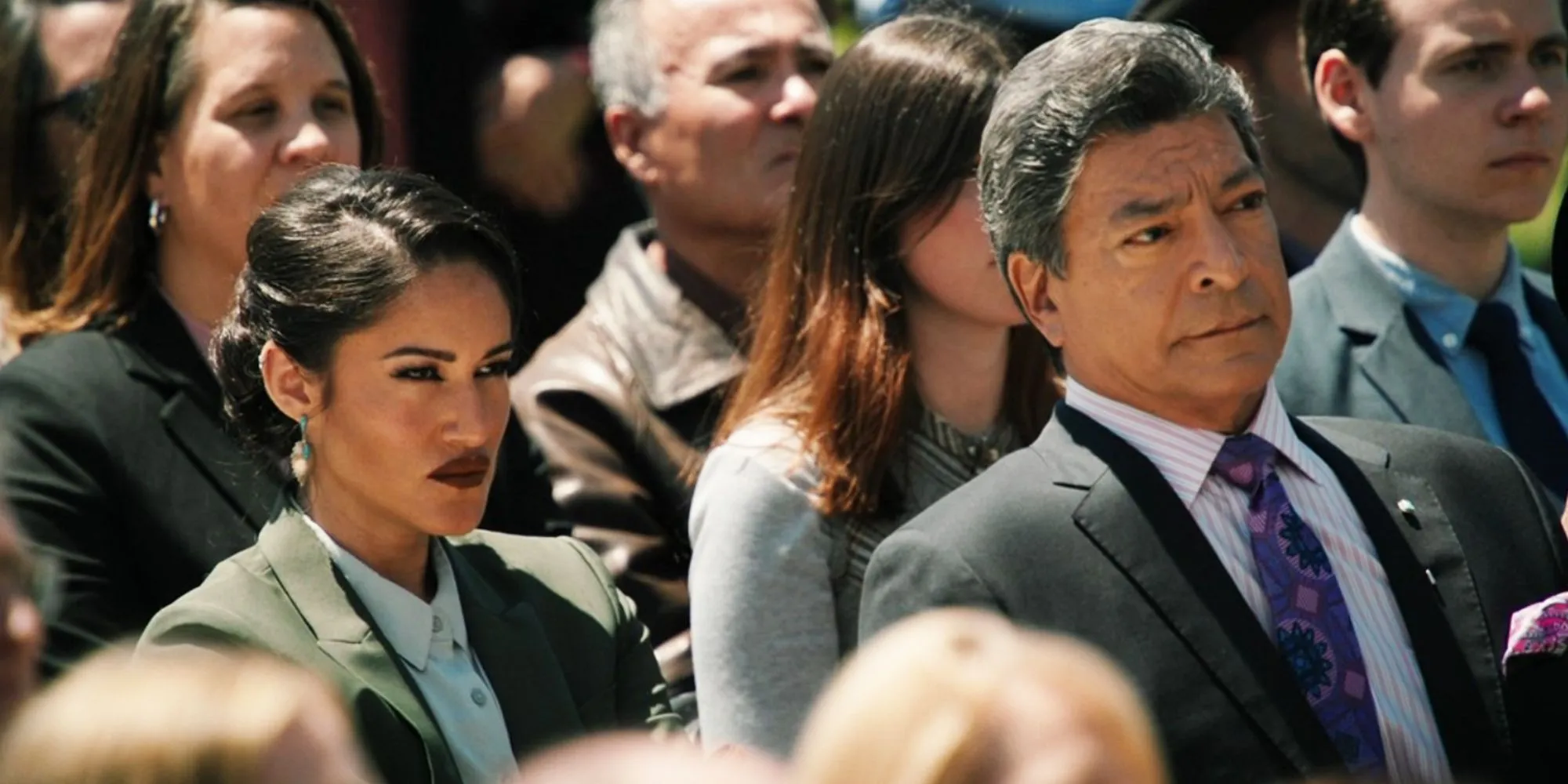
Teonna Rainwater’s narrative in 1923 showcases deeply unsettling scenes that resonate painfully with historical realities. This Yellowstone spinoff dramatizes the stark physical and emotional abuse endured by Indigenous American youth in a Catholic boarding school located in Montana. Teonna faces relentless brutality from Sister Mary, not only for minor mistakes in her lessons but also for the simple act of speaking her Native language. This harrowing portrayal emphasizes systemic dehumanization as Teonna staunchly resists her oppressors, provoking increasingly violent retaliation.
Sadly, the series presents an accurate reflection of the dark legacy of such boarding schools. These horrific institutions, which operated under the guise of education, were founded by Western settlers with the intent of forcibly assimilating Indigenous populations displaced during America’s Westward Expansion. As the most somber chapter in the Yellowstone franchise, 1923 reveals a period plagued by rampant abuse not only in Montana but throughout the United States and Canada as well. The troubling scenes included in the series create a disturbing yet essential narrative that grapples with this historical context.
Unveiling the Historical Context of Catholic Boarding Schools for Indigenous Americans
A History of Cultural Erasure

The harrowing portrayal within 1923, particularly regarding Teonna’s relationship with Father Renaud and Sister Mary, draws directly from historical accounts of “American Indian boarding schools”that proliferated in the mid-1800s. Though Montana hosted only the Fort Shaw Indian School, nearly 200 other institutions emerged throughout approximately 30 American states since the 1840s, with a notable concentration in Oklahoma, Minnesota, and South Dakota.
Both 1923 and these real-life boarding schools aimed to erase Indigenous languages and identities, forcibly introducing Christianity and Western customs. This erasure laid a disturbing foundation for the ongoing abuse faced by generations of Indigenous children. In an interview with Screen Rant, actress Jennifer Ehle, who plays Sister Mary, highlighted the entrenched beliefs driving this cruelty:
“Sister Mary is a person who believes, as the people who were running these residential schools actually did believe, that you had to ‘kill the Indian to save the man.’ You had to force assimilation; you had to remove all cultural identity from these children who had been removed forcibly from their families and were living in isolation.”
While many boarding schools have since closed or undergone significant reform, the legacy of abuse has indelibly scarred the history of Indigenous nations in America. Aminah Nieves, who portrays Teonna, emphasizes the gripping nature of these stories, stating:
“Yeah, it’s hard. But being indigenous, it’s our duty to tell our stories and to tell them as strongly, quickly, and powerfully as we can. It’s what we’re born into, and we’re storytellers from the jump. You know what I’m saying? Continuing to tell our story as honestly as we can is very important.”
The Historical Foundations of 1923
Dutton Ranch: A Lens into History

While Teonna’s traumatic experiences are among the show’s most haunting depictions, 1923 primarily chronicles the trials faced by the Dutton family as they navigate the harsh realities of Montana during an economically turbulent period. The series may center around fictional characters, but it is deeply enriched by authentic historical events.
The portrayal of Indigenous children’s abuse, juxtaposed with the socioeconomic challenges of ranching amid the Great Depression and Prohibition, adds another layer of depth. Contextualized against government-funded efforts to erase Indigenous cultures, the dark themes explored in 1923 promise to intensify as the storyline progresses into the complexities of 1920s America.
Linking 1923’s Narrative to the Broader Yellowstone Context
Dueling Perspectives: Thomas Rainwater’s Role

The inclusion of the Indian Schools in 1923 not only serves as a stark reminder of historical atrocities but also enriches the context of the original Yellowstone series. Throughout the show, Thomas Rainwater stands in direct opposition to John Dutton’s land ambitions, often viewed as an antagonist. However, his motivations reveal deeper historical injustices faced by his people.
As the series unfolds, it becomes increasingly clear that the conflict between Rainwater and the Duttons transcends mere land disputes, rooted instead in a painful legacy of violence and dispossession. In a poignant turn of events, the Dutton family’s ultimate decision to bequeath land to Rainwater serves as a moment of redemption, acknowledging the historical grievances inflicted upon Indigenous communities.
Aminah Nieves and Jennifer Ehle: Reflecting on the Stories Behind the Scenes
Creating a Safe Space Amidst Harrowing Scenes

The filming of the intense boarding school scenes in 1923 proved to be a challenging endeavor for Aminah Nieves and Jennifer Ehle. According to an interview with TV Insider, the first day of shooting featured the emotionally charged classroom scene where Sister Mary assaults Teonna. Acknowledging the weight of these moments, both actors emphasized the importance of establishing boundaries and maintaining a respectful atmosphere on set, allowing for necessary emotional space.
Nieves remarked on Teonna’s reluctance to harm Sister Mary, highlighting the complex emotional struggles faced by characters in such a volatile environment. She described Teonna’s actions as one driven by survival rather than desire, illustrating the heartbreaking circumstances surrounding her character.
Conversely, Ehle portrayed Sister Mary as a misguided protector, staunchly believing in her harmful methods. Her reflection emphasizes the extent of ignorance and damage within such individuals, rooting their actions in a troubling belief system.
Despite the challenging subject matter, Nieves expressed pride in showcasing these stories and recognized the importance of fostering dialogue about these historical experiences, conveying a sense of duty to illuminate the scars ingrained within communities affected by these events.
Possible Ancestry: Teonna and Chief Thomas Rainwater
Ties That Bind: Foreshadowing Future Conflicts

The potential familial connection between Teonna and Chief Thomas Rainwater opens intriguing narrative possibilities within the Yellowstone franchise. Both characters, despite their different roles and experiences of trauma, underscore the persistent mistreatment faced by Indigenous American communities since the 1800s.
While the Duttons are often depicted as heroic figures, the portrayal of Native American characters clearly elucidates the underlying injustices driving their opposition. 1923 could potentially reveal Teonna’s surname as Rainwater, suggesting a lineage that ties her character to the larger narrative of resistance against colonialism in Yellowstone.
Other Authentic Inspirations in the Yellowstone Franchise
Grounded in Reality: Authentic Narratives within the Franchise

While the entire Yellowstone franchise is inherently fictional, it is deeply rooted in actual historical events that lend authenticity to its storytelling. This commitment to realism resonates throughout the series, especially in its examination of contemporary issues facing ranching communities.
The connections created in 1883 offer a profound exploration of the early struggles during America’s Westward Expansion, portraying harsh realities faced by early settlers alongside recognizable historical characters and events. Celebrity cameos, such as Billy Bob Thornton as Marshal Jim Courtright and Tom Hanks as General George Meade, highlight the franchise’s commitment to embedding historical context within its narratives.
In summary, while the Yellowstone storylines primarily weave fiction, they effectively incorporate real-life events and themes, enriching the viewer’s experience and maintaining a powerful connection to America’s multifaceted history.




Leave a Reply